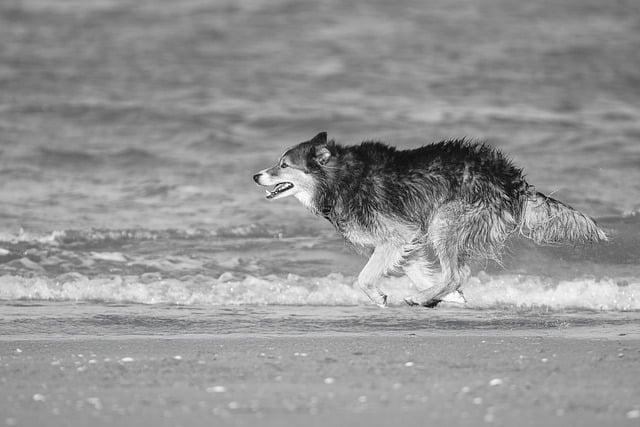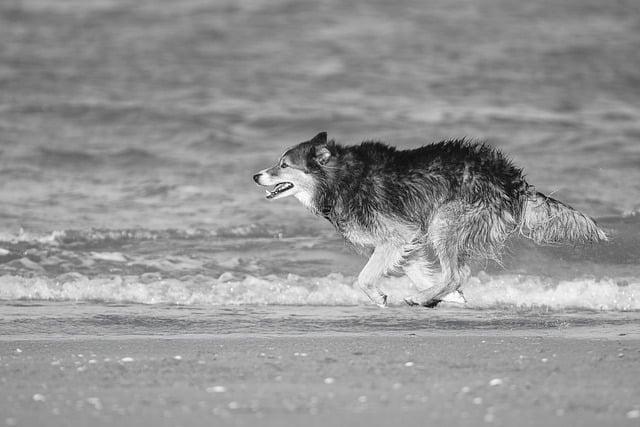Max, a spirited golden retriever, had a knack for stealing socks and barking at the mailman. Frustrated, his owner Sarah sought help. She learned that consistency and positive reinforcement were key. Instead of scolding Max, she rewarded him for good behavior, redirecting his energy with engaging toys and training sessions. Over time, Max transformed into a well-mannered companion. If you’re struggling with your dog’s behavior, remember: patience and positive reinforcement can turn chaos into harmony. Your furry friend is eager to learn!
Contents
- Understanding the Root Causes of Your Dogs Bad Behavior
- Effective Training Techniques to Modify Unwanted Actions
- Creating a Positive Environment for Behavioral Improvement
- Establishing Consistent Routines for Long-Term Success
- Q&A
Understanding the Root Causes of Your Dogs Bad Behavior
To effectively address your dog’s undesirable behaviors, it’s crucial to first delve into the underlying reasons behind them. Dogs, much like humans, communicate through their actions, and understanding these signals can lead to a more harmonious relationship. Behavioral issues can stem from a variety of factors, including:
- Lack of Socialization: Dogs that haven’t been adequately exposed to different environments, people, and other animals may exhibit fear or aggression.
- Insufficient Exercise: A bored or under-exercised dog is more likely to engage in destructive behaviors as a means of releasing pent-up energy.
- Separation Anxiety: Dogs that experience distress when left alone may resort to barking, chewing, or other disruptive actions.
- Medical Issues: Sometimes, bad behavior can be a sign of underlying health problems, such as pain or discomfort.
Recognizing these root causes is essential for developing an effective correction strategy. For instance, if your dog is acting out due to lack of socialization, gradually introducing them to new experiences can help alleviate their anxiety and improve their behavior. Similarly, incorporating regular exercise into their routine can significantly reduce hyperactivity and destructive tendencies. Tailoring your approach to the specific needs of your dog will yield the best results.
Moreover, it’s important to consider the role of training in shaping your dog’s behavior. Positive reinforcement techniques, such as rewarding good behavior with treats or praise, can effectively encourage desirable actions while discouraging negative ones. Consistency is key; ensure that all family members are on the same page regarding commands and expectations to avoid confusing your dog.
Lastly, never underestimate the power of professional guidance. If you’re struggling to identify the root causes of your dog’s behavior or feel overwhelmed by the challenges, consulting a certified dog trainer or a veterinary behaviorist can provide valuable insights. They can help you create a tailored plan that addresses your dog’s specific issues, ensuring a happier and healthier life for both you and your furry companion.
Effective Training Techniques to Modify Unwanted Actions
When it comes to reshaping your dog’s behavior, employing effective training techniques is crucial. One of the most successful methods is **positive reinforcement**, which involves rewarding your dog for displaying the desired behavior. This could be through treats, praise, or playtime. By consistently rewarding good behavior, you create a positive association that encourages your dog to repeat those actions. Remember, timing is key; rewards should be given immediately after the desired behavior to reinforce the connection.
Another powerful technique is **redirecting unwanted behavior**. Instead of simply scolding your dog for misbehavior, guide them towards a more appropriate action. For instance, if your dog is chewing on furniture, redirect their attention to a chew toy. This not only helps them understand what is acceptable but also keeps them engaged and mentally stimulated. Consistency in redirecting behavior will help your dog learn the boundaries of acceptable actions.
Incorporating **structured routines** can also significantly impact your dog’s behavior. Dogs thrive on predictability, and having a set schedule for feeding, walks, and playtime can reduce anxiety and unwanted actions. Establishing a routine helps your dog understand what to expect, which can lead to a calmer demeanor. Additionally, regular exercise is essential; a tired dog is less likely to engage in destructive behaviors. Make sure to include daily walks and play sessions in your routine.
Lastly, consider the power of **socialization**. Exposing your dog to various environments, people, and other animals can help reduce fear-based behaviors and aggression. Gradually introduce your dog to new experiences, ensuring they feel safe and comfortable. Positive interactions during these socialization sessions can lead to improved behavior over time. Remember, patience and persistence are key; behavioral modification is a journey that requires commitment and understanding.
Creating a Positive Environment for Behavioral Improvement
Creating a nurturing atmosphere is essential for fostering positive behavioral changes in your dog. Dogs thrive in environments where they feel safe and secure, which encourages them to explore and learn without fear. To cultivate such an environment, consider implementing the following strategies:
- Establish a Routine: Dogs are creatures of habit. A consistent daily schedule for feeding, walks, and playtime helps them understand what to expect, reducing anxiety and promoting good behavior.
- Designate a Safe Space: Create a specific area in your home where your dog can retreat when feeling overwhelmed. This space should be comfortable and free from distractions, allowing your pet to relax and recharge.
- Use Positive Reinforcement: Rewarding good behavior with treats, praise, or playtime reinforces desirable actions. This method not only encourages your dog to repeat those behaviors but also strengthens the bond between you and your pet.
- Minimize Stressors: Identify and reduce potential stressors in your dog’s environment, such as loud noises or chaotic situations. A calm atmosphere will help your dog feel more at ease and open to learning.
Engaging in regular training sessions is another vital component of creating a positive environment. Short, fun, and interactive training exercises can significantly enhance your dog’s focus and willingness to learn. Incorporate games that stimulate their mind and body, making the learning process enjoyable. This not only aids in correcting bad behavior but also builds confidence and trust between you and your dog.
- Keep Sessions Short: Aim for 5-10 minute training sessions to maintain your dog’s attention and enthusiasm.
- Incorporate Play: Use toys and games to make training feel less like a chore and more like a fun activity.
- Be Patient: Understand that behavioral improvement takes time. Celebrate small victories to keep motivation high.
Socialization is equally important in shaping your dog’s behavior. Exposing your dog to various environments, people, and other animals can help them develop essential social skills. Gradually introduce your dog to new experiences, ensuring they feel comfortable and secure throughout the process. This exposure will not only reduce fear-based behaviors but also encourage a more adaptable and well-rounded pet.
- Start Slow: Begin with controlled environments before progressing to busier settings.
- Monitor Body Language: Pay attention to your dog’s signals and remove them from situations that cause distress.
- Encourage Positive Interactions: Reward your dog for calm and friendly behavior during social encounters.
remember that your own demeanor plays a crucial role in shaping your dog’s behavior. Dogs are highly attuned to their owner’s emotions and reactions. By maintaining a calm, assertive, and positive attitude, you set the tone for your dog’s behavior. Consistency in your approach will not only help correct undesirable actions but also create a loving and supportive environment where your dog can thrive.
Establishing Consistent Routines for Long-Term Success
Creating a structured environment for your dog is essential for correcting bad behavior and fostering long-term success. Dogs thrive on routine, as it provides them with a sense of security and predictability. By establishing consistent daily schedules for feeding, walking, and training, you can help your dog understand what is expected of them. This clarity reduces anxiety and confusion, making it easier for them to learn appropriate behaviors.
Incorporating regular training sessions into your dog’s routine is crucial. Aim for short, engaging sessions that reinforce positive behaviors and discourage negative ones. Use **positive reinforcement** techniques, such as treats and praise, to reward your dog when they exhibit the desired behavior. This not only strengthens your bond but also encourages your dog to repeat good behaviors. Remember, consistency is key; ensure that all family members are on the same page regarding commands and rewards.
Additionally, consider setting specific times for play and exercise. A well-exercised dog is less likely to engage in destructive behaviors stemming from boredom or excess energy. Incorporate a variety of activities, such as walks, fetch, and puzzle toys, to keep your dog mentally and physically stimulated. This not only helps in correcting bad behavior but also contributes to their overall well-being.
monitor your dog’s progress and adjust routines as necessary. Keep track of what works and what doesn’t, and be prepared to make changes if certain strategies aren’t yielding the desired results. Regularly assess your dog’s behavior and adapt your training methods to suit their evolving needs. By committing to a consistent routine, you lay the groundwork for a well-behaved and happy companion, ensuring long-term success in your training efforts.
Q&A
-
What are some common bad behaviors in dogs?
Common bad behaviors include:
- Barking excessively
- Jumping on people
- Chewing furniture or shoes
- Digging in the yard
- Not coming when called
-
How can I effectively correct my dog’s bad behavior?
To correct bad behavior, consider the following strategies:
- Use positive reinforcement to reward good behavior.
- Be consistent with commands and rules.
- Redirect your dog’s attention to a more appropriate behavior.
- Provide regular exercise to reduce excess energy.
-
Is punishment effective in correcting bad behavior?
While punishment may seem effective in the short term, it can lead to fear and anxiety. Instead, focus on:
- Positive reinforcement techniques.
- Building a trusting relationship with your dog.
- Encouraging desired behaviors rather than punishing unwanted ones.
-
When should I seek professional help for my dog’s behavior?
If your dog’s bad behavior persists despite your efforts, consider seeking professional help when:
- The behavior poses a danger to your dog or others.
- It leads to significant stress for you or your dog.
- You feel overwhelmed and unsure of how to proceed.
correcting your dog’s bad behavior is not just about discipline; it’s about fostering a loving and respectful relationship. With patience, consistency, and the right techniques, you can transform your furry friend into a well-mannered companion. Start today!




